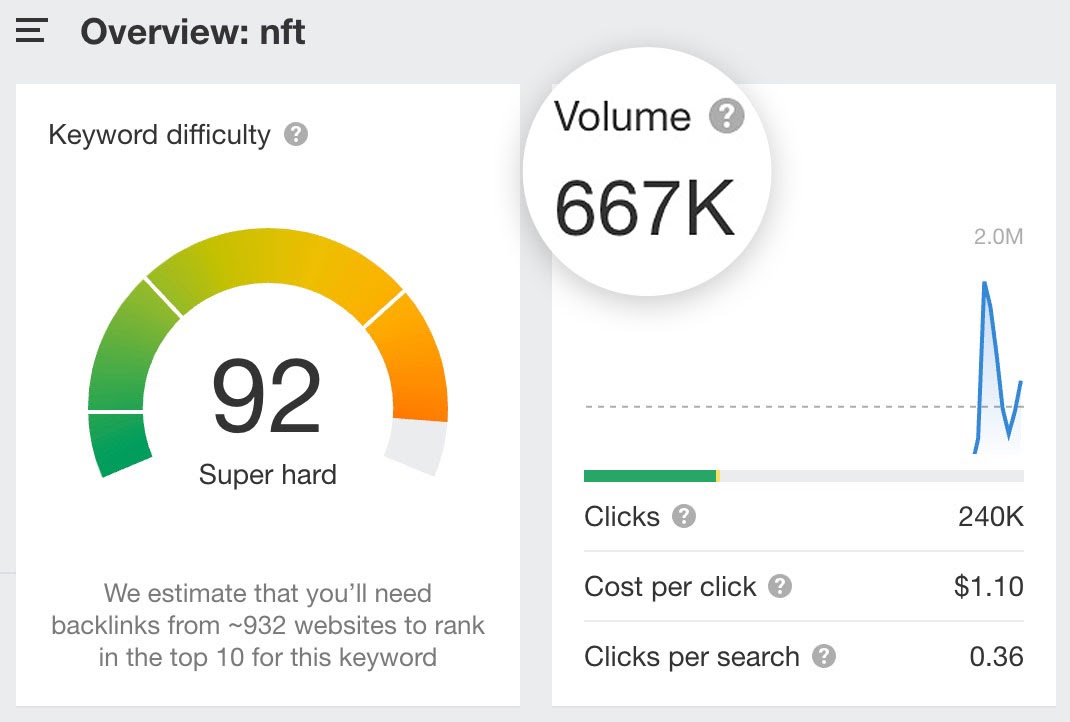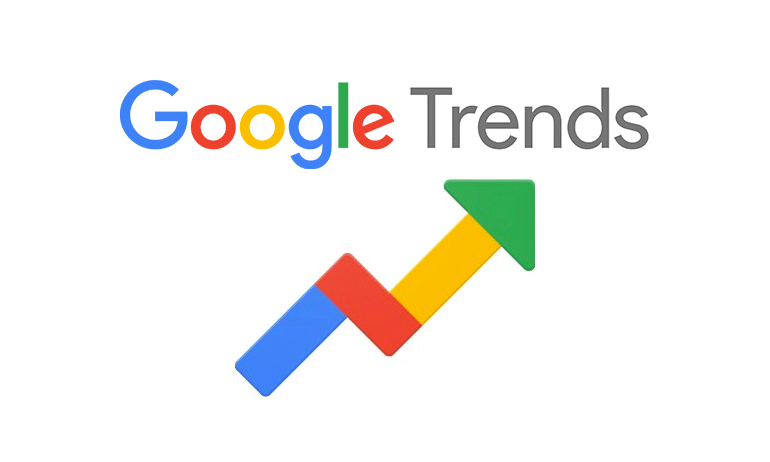Keyword research forms the cornerstone of any successful search engine optimization strategy. Among the many aspects of keyword research, keyword search volume stands out as one of the most critical factors.
It provides a window into user behavior, interest, and the potential traffic a keyword can drive to your website. This guide delves deep into keyword search volume, its importance, how to analyze it, and strategies to integrate it into your SEO practices effectively.
What is Keyword Search Volume?
Keyword search volume refers to the average number of times a specific keyword or phrase is searched within a given timeframe—usually a month.
This metric indicates the popularity and potential traffic a keyword can bring to your website. For example, if the keyword “best smartphone 2024” has a monthly search volume of 50,000, it suggests a high level of interest in this topic.
Key Characteristics of Keyword Search Volume:
Dynamic Nature: Search volume is not static; it fluctuates based on trends, seasons, and events. For example, “Black Friday deals” sees a surge every November.
Relative Scale: A high search volume is relative to the industry and context. For a niche industry, 1,000 monthly searches might be significant, while for broader markets, 100,000 may be average.
Impact on Strategy: High search volume keywords can drive more traffic, but they’re often highly competitive. Conversely, low-volume keywords might offer better targeting opportunities with less competition.
Why is Keyword Search Volume Important?
Understanding keyword search volume equips marketers with valuable insights to shape their SEO and content strategies. Here’s why it matters:
1. Gauges User Interest:
Search volume acts as a barometer of user interest in specific topics. High search volume suggests widespread interest, enabling you to target popular queries and attract a larger audience.
2. Helps Estimate Traffic Potential:
Search volume provides an estimate of how much traffic a keyword could drive. A keyword with 10,000 monthly searches offers a significantly higher potential traffic pool than one with 100 searches.
3. Guides Content Strategy:
It uncovers trending and evergreen topics. By focusing on keywords with substantial search volume, you can create content that resonates with your audience and ensures sustained relevance.
4. Informs PPC Campaigns:
Search volume also impacts pay-per-click (PPC) strategies. Keywords with higher search volumes often have higher costs-per-click (CPC), but their traffic potential might justify the investment.
5. Facilitates Trend Monitoring:
Tracking keyword search volume over time helps identify shifts in user behavior and preferences, enabling timely adjustments to your strategy.
Evergreen vs. Seasonal Keywords
Keywords can be broadly categorized into two types based on their search volume patterns: evergreen and seasonal.
1. Evergreen Keywords:
Evergreen keywords maintain consistent search volume throughout the year. These are topics that remain relevant regardless of external factors. Examples include:
- How to lose weight
- Best credit cards for cashback
Why Target Evergreen Keywords?
- Provide stable and reliable traffic.
- Ideal for long-term content strategies.
- Help establish authority in your niche.
2. Seasonal Keywords:
Seasonal keywords experience spikes in search volume during specific times or events. Examples include:
- Christmas gift ideas
- Back-to-school sales
How to Leverage Seasonal Keywords:
- Plan content and campaigns ahead of time to capitalize on peak periods.
- Use these keywords to drive short-term traffic and conversions during relevant seasons.
Factors to Consider in Keyword Search Volume Analysis
1. Competition:
High search volume often correlates with high competition. Ranking for such keywords may require substantial effort, especially for new or low-authority websites. Low-volume keywords, on the other hand, can offer niche opportunities with less competition.
2. Relevance:
The keyword’s relevance to your content, products, or services is critical. Even high-volume keywords are useless if they don’t align with your audience’s needs. Targeting irrelevant keywords may lead to high bounce rates and negatively impact user experience.
3. User Intent:
Understanding the purpose behind a search query—whether informational, navigational, or transactional—helps in targeting the right audience and increasing conversions. For instance:
- “What is keyword search volume?” indicates informational intent.
- “Buy Ahrefs subscription” reflects transactional intent.
Tools to Find Keyword Search Volume
Multiple tools are available to analyze keyword search volume, each offering unique features and benefits. Below are some of the most popular tools:
1. Ahrefs Keywords Explorer:
Ahrefs provides detailed insights, including:
- Search volume by country.
- Global traffic breakdown.
- Keyword difficulty.
Features:
- Extensive database with over 29 billion keywords.
- Ability to filter high-volume, low-competition keywords.
- Prices start at $129/month.
2. SEMrush Keyword Tool:
SEMrush’s Keyword Tool is known for its comprehensive data, including:
- Volume trends over time.
- Keyword variations and related questions.
Features:
- Tracks seasonal spikes.
- Suggests keyword variations.
- Pricing begins at $129.95/month.
3. Moz Keyword Explorer:
Moz offers a user-friendly interface and provides:
- Monthly search volume (single number or range).
- Priority scores to identify ranking opportunities.
Features:
- Highlights high-volume, low-difficulty keywords.
- Plans start at $99/month.
4. Google Keyword Planner:
This free tool is accessible via Google Ads and includes:
- Monthly and yearly search volume trends.
- Competition metrics and CPC estimates.
Features:
- Ideal for PPC campaigns.
- Completely free with a Google Ads account.
5. Google Trends:
While not as precise, Google Trends helps identify:
- Emerging trends.
- Regional and seasonal variations in search interest.
Features:
- Free to use.
- Great for spotting new opportunities.
6. Ubersuggest:
Ubersuggest provides budget-friendly keyword research with insights like:
- Search volume and keyword difficulty.
- Organic and paid performance metrics.
Features:
- Free for three searches daily.
- Lifetime access available for a one-time fee starting at $290.
Keyword Search Volume and SEO Strategy
Integrating keyword search volume into your SEO strategy involves more than targeting high-volume keywords. Here are some actionable strategies:
1. Mix High-Volume and Low-Volume Keywords:
Combining these keywords ensures a balanced approach. High-volume keywords attract broader traffic, while low-volume keywords provide niche opportunities with better conversion potential.
2. Optimize for Long-Tail Keywords:
Long-tail keywords are specific phrases like “Best SEO tools for small businesses.” They:
- Are less competitive.
- Often indicate clear user intent.
- Result in higher conversion rates.
3. Monitor Trends and Adjust:
Regularly analyze keyword performance and adjust your strategy based on shifting search behaviors.
4. Evaluate Content Performance:
Tools like Google Analytics and Search Console help track how well your content performs for targeted keywords.
Challenges in Using Keyword Search Volume
Keyword search volume analysis is invaluable but not without challenges:
1. Fluctuating Trends:
Search volumes can change due to seasons, trends, or unexpected events, requiring constant monitoring.
2. Limited Insights on Intent:
Search volume alone doesn’t reveal the full picture of user intent, necessitating supplementary analysis.
3. Overemphasis on High Volume:
Focusing solely on high-volume keywords can lead to fierce competition and diminished ROI.
Advanced Tips for Leveraging Keyword Search Volume
- Cluster Keywords: Group related keywords to optimize content for multiple search queries.
- Analyze Competitor Keywords: Study competitors to uncover new keyword opportunities.
- Experiment with Question-Based Keywords: Use queries like “What is keyword search volume?” to attract engaged users.
- Leverage Featured Snippets: Target keywords likely to appear in featured snippets to boost visibility.
- Incorporate Feedback: Use surveys and comments to identify keywords reflecting audience preferences.
FAQs
What constitutes a good search volume for a keyword?
A good search volume depends on your industry and goals. Generally, higher search volumes indicate greater interest, but they also come with higher competition. Balance high-volume keywords with less competitive options to optimize your strategy.
How often should I check keyword search volume?
Review keyword search volume data regularly, at least every few months, to stay updated on trends and adjust your strategy as needed.
Can keyword search volume data be inaccurate?
Yes, keyword search volume data is an estimate and can vary between tools. Use multiple sources and consider the data as a guide rather than an exact number.
How can I find low-competition keywords?
Use SEO tools to identify keywords with high search volume but lower competition. Long-tail keywords and niche topics often have less competition and can be easier to rank for.
How do I improve my ranking for high-volume keywords?
Focus on creating high-quality, relevant content that aligns with user intent. Optimize your on-page SEO, build backlinks, and ensure your site provides a great user experience to improve your chances of ranking for high-volume keywords.
Conclusion
Keyword search volume is a vital metric for anyone involved in digital marketing and SEO. By understanding and leveraging this data, you can create targeted content, optimize your SEO efforts, and stay ahead of industry trends.
Remember to use keyword search volume data as part of a comprehensive strategy, balancing it with user intent and content quality to achieve the best results. With these insights, you can enhance your online presence and drive meaningful traffic to your website. Happy optimizing!
An avid blogger, dedicated to boosting brand presence, optimizing SEO, and delivering results in digital marketing. With a keen eye for trends, he’s committed to driving engagement and ROI in the ever-evolving digital landscape. Let’s connect and explore digital possibilities together.










